4. BioChromes¶



• REFERENCES & INSPIRATION¶

I have been looking forward for this week, as I am fascinated with the different processes of plants/flowers&co dyes & inks as well as ecoprint, and never really had the opportunity to study it before. I have always been captivated with these techniques, the magical process and the experimentation part; There is something very poetic and romantic to me to still practice this today as it is against the fast pace of modern life/technology & requires a strong knowledge of natural materials. Also permitting low scale production and one of a kind pieces; this is dear to me as I am against fast-fashion and mass-production, not only for ecological reasons but also for aesthetics and singular expression. Also because I think that quality items takes time to be made.
I also like very much the idea of being protected/envelopped by plants&flowers benefits, feeling that If we are wearing a specific clothing, our skin is in contact with it most part of the day.
• PROCESS AND WORKFLOW : TINCTORIAL PLANTS¶
A lot of plants contain color molecules, huge variety of different molecules Plants can be used only on vegetal fibers (cellulose-based - cotton, linen, hemp, rayon, stinging nettle...) and animal fibers.
We're going to look for the more solid (stable?) molecules, not going to get into ephemeral dyes.
The three more stable plants: madder, reseda, marigold (calendula)
The three primary colors:
- red: garance (madder)
- yellow: reseda (réséda)
- indigo: many different plants
Reference Book: "Le monde des teintures naturelles" by Dominique Cardon
• PREPARING THE FIBERS¶
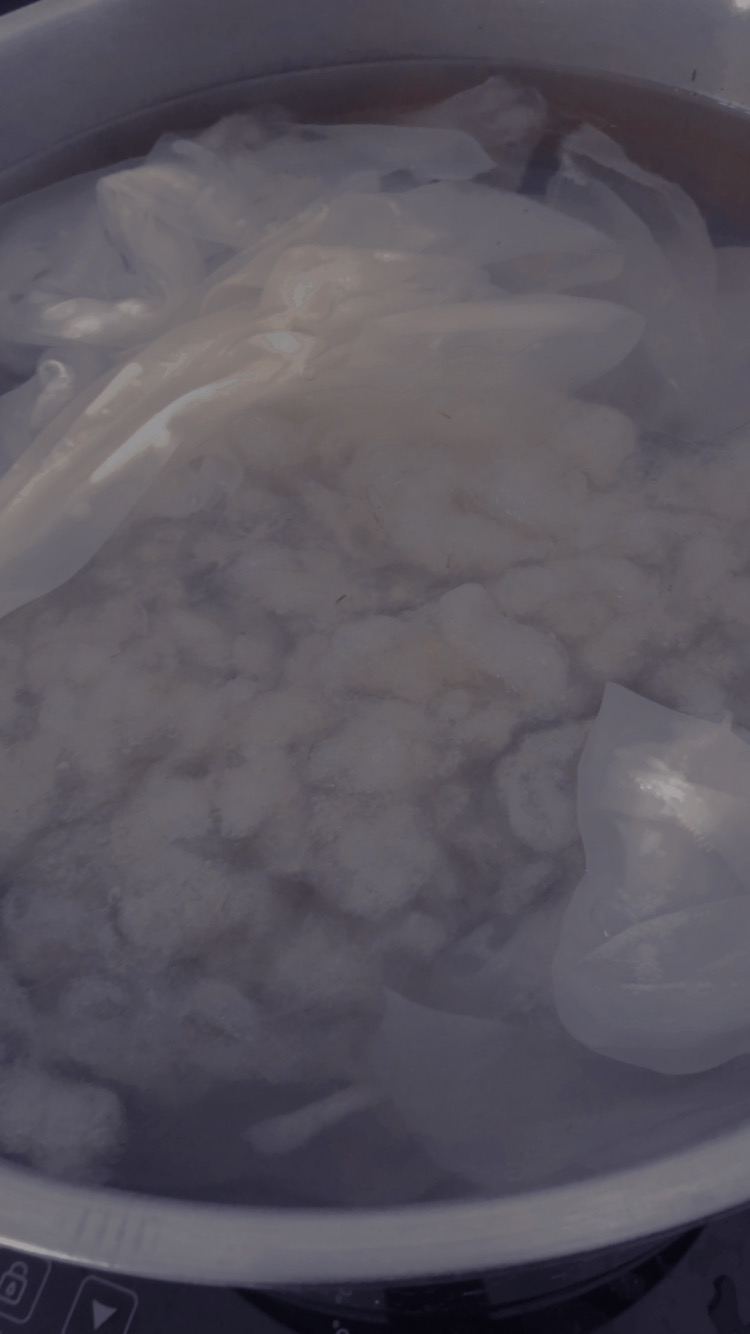
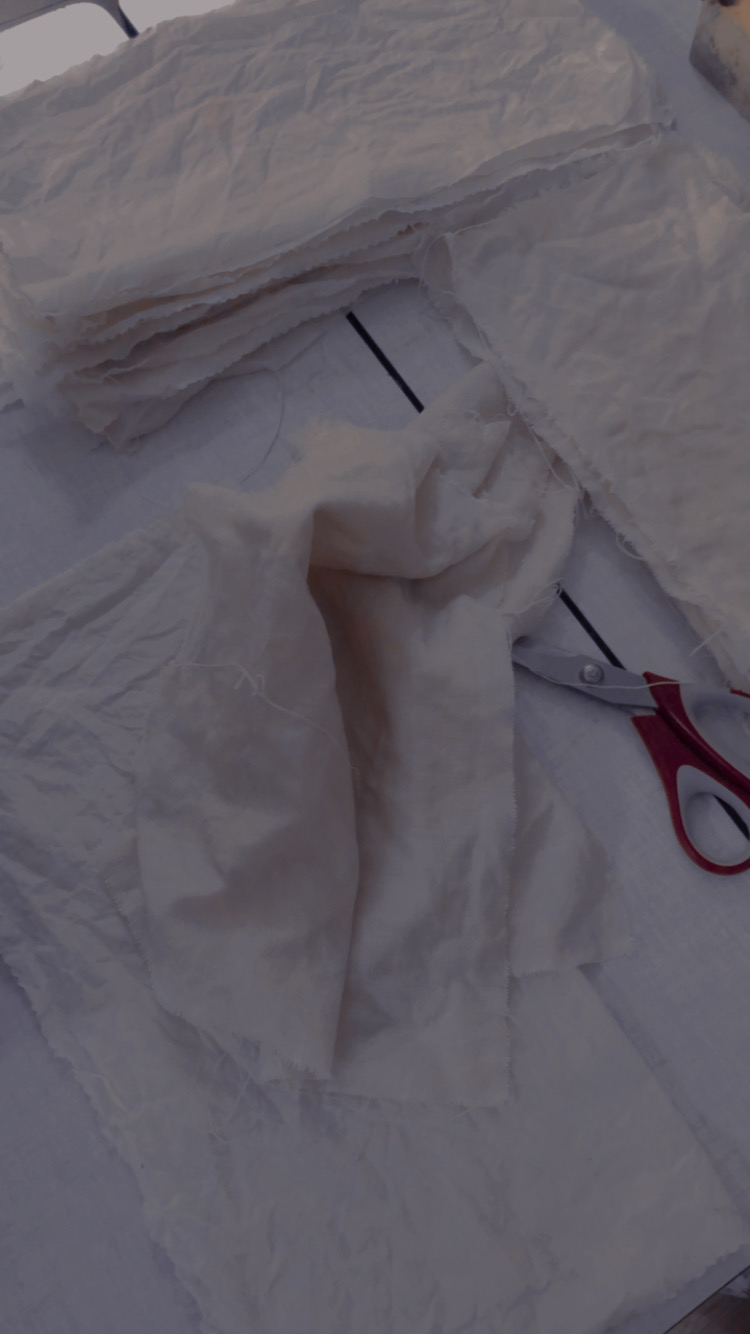
to receive color, fibers need to be opened. It is hard to get raw fibers locally, so we generally buy them already prepared, a "primer" already applied, which prevents color to bind with the fibers. Many baths with savon de marseille are necessary to get the fiber back in its natural state, it can even take months.
The most used and efficient is "Lessive de cendre" (wood ash, prepared from sumac, oak, walnut, chestnut tree...) to prepare cellulosic fibers to be dyed. To make it you soak ash in water (20g for 1 liter) for about 12 hours then filter out the solids. It is very basic (alkanine) so toxic for human. The problem is that woods contain tannins, which dyes the fibers. Goal is to find woods that don't dye fiber a lot. Oak has a lot of tannins but doesn't dye a lot so it's the best, whereas walnut colors too much. Sap trees are too acidic.
Never take a fabric just bought and try to dye it.
• Mordanting¶
Most plants need help to hold on the fibers in time. A few plants are "plantes substantives" like rhubarb root (yellow), rumex (yellow), eucalyptus (orange) have oxalic acid and don't need mordanting for animal fibers (oxalic acid binds to protein in the fibers), they can also be used as mordants for other colors. They are not used a lot and only on animal fibers, not cellulosic fibers.
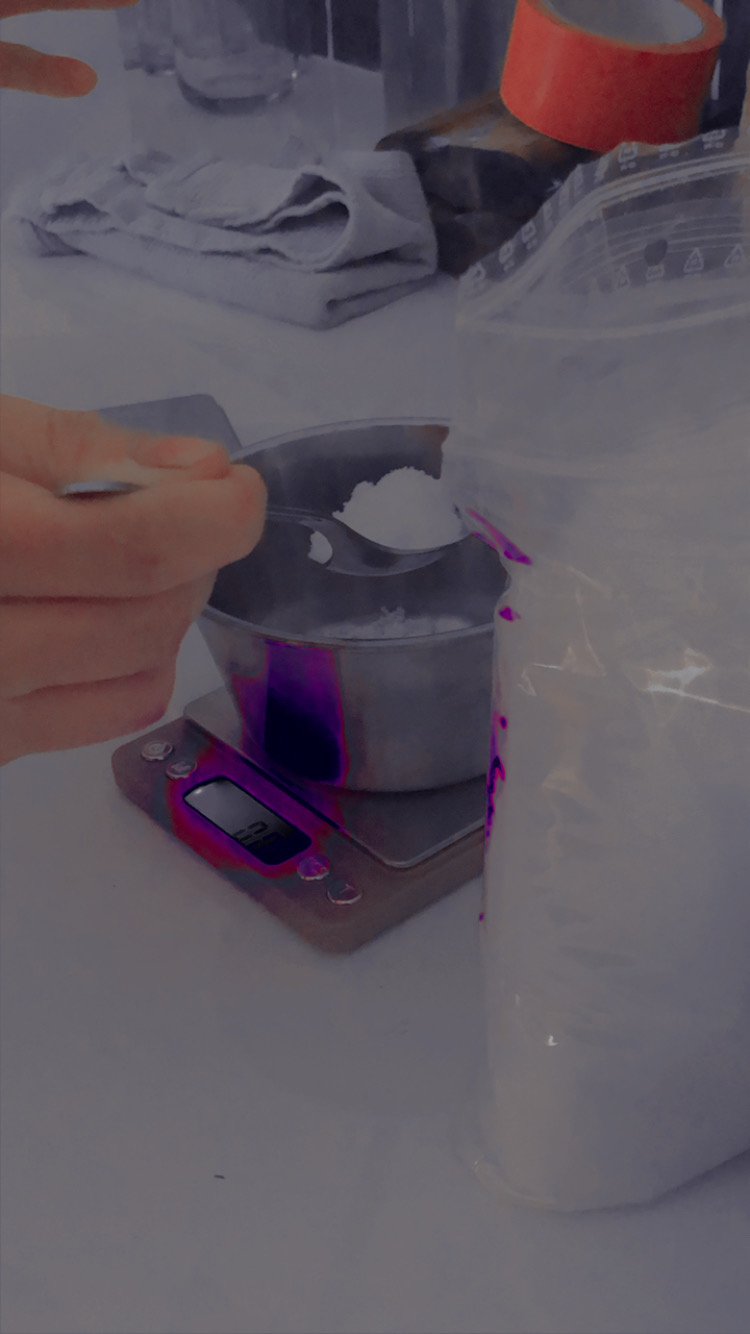
For animal fibers (wool, silk) : Alum is needed, which is a metal. Most used is "alun de potassium" (potassium alum). Can be bought in crystals but can also be found in some plants to have 100% plant-based dyeing process: lycopodes, symplocos, prêle To extract alum from the plants you make a decoction. We have to heat the fibers in an alum bath ("alunage"). Need to weigh the dry fibers first of all, and weigh the potassium alum. Ratio depends on the result you want, how strong you want the color to be, but a good ratio in 20% to 30%. We can also add some cream of tartar (5%) in addition to the alum for wool. Leave to soak at 90° for 2 to 3 hours then rince it and let it dry. The more you let the fibers dry between mordanting and dyeing the deeper the color will be and the more the color will stay.
For cellulosic fibers (linen, cotton..) : We have to do a mordanting bath and then you add tannins. ("engallage") Tannins add nuances to the fibers, they have a color ; without tannins, colors have bad lightfastness on cellulosic fibers. Add protein to the fiber (so used on cellulose fibers and not animal fibers because they already have a lot of protein).
Gall nut (noix de galle) is very concentrated in tannins (50% tannins) and doesn't color much (a little off white). 30% plant or 10% tannin extract for the weight of the fibers for 100g fibers, need around 3 litres of water. Tannin bath is left to heat for about an hour.
Iron is also a mordant, iron sulfate powder. You can also take rusty nails and leave it in vinegar for one month to make "nail soup". Alum lights up the color, iron darkens it. Take rusty nails and leave it in vinegar for one month to make nail soup
Lightfastness test: control sample in the dark, test sample left in the sun for 12 days. Washfastness test: try washing with dishsoap. Rubbing fastness: try rubbing the fabric by hand for 10 minutes.
Recipes to prepare the fibers
ANIMAL FIBRE (silk, wool) Ingredients & ustensils :
- Alum powder
- Pots and pans
- Hot plate
- Gloves
- Thermometer
- Kitchen scale
- Fabric
- Water
Steps :
* Step 1 - Place the fabric in an alum bath at 60°, for at least 1 hour. (Alum quantity is 20 to 30% of the fibres)
* Step 2 - Cool gently then heat again (the ideal is to heat the wool and silk gradually to 90° very gently)
* Step 3 - Leave to cool
* Step 4 - wring out gently and rinse with clean water
CELLULOSE FIBRE (cotton, linen..) Ingredients & ustensils :
- Gall nut powder
- Pots and pans
- Hot plate
- Gloves
- Thermometer
- Kitchen scale
- Fabric
- Water
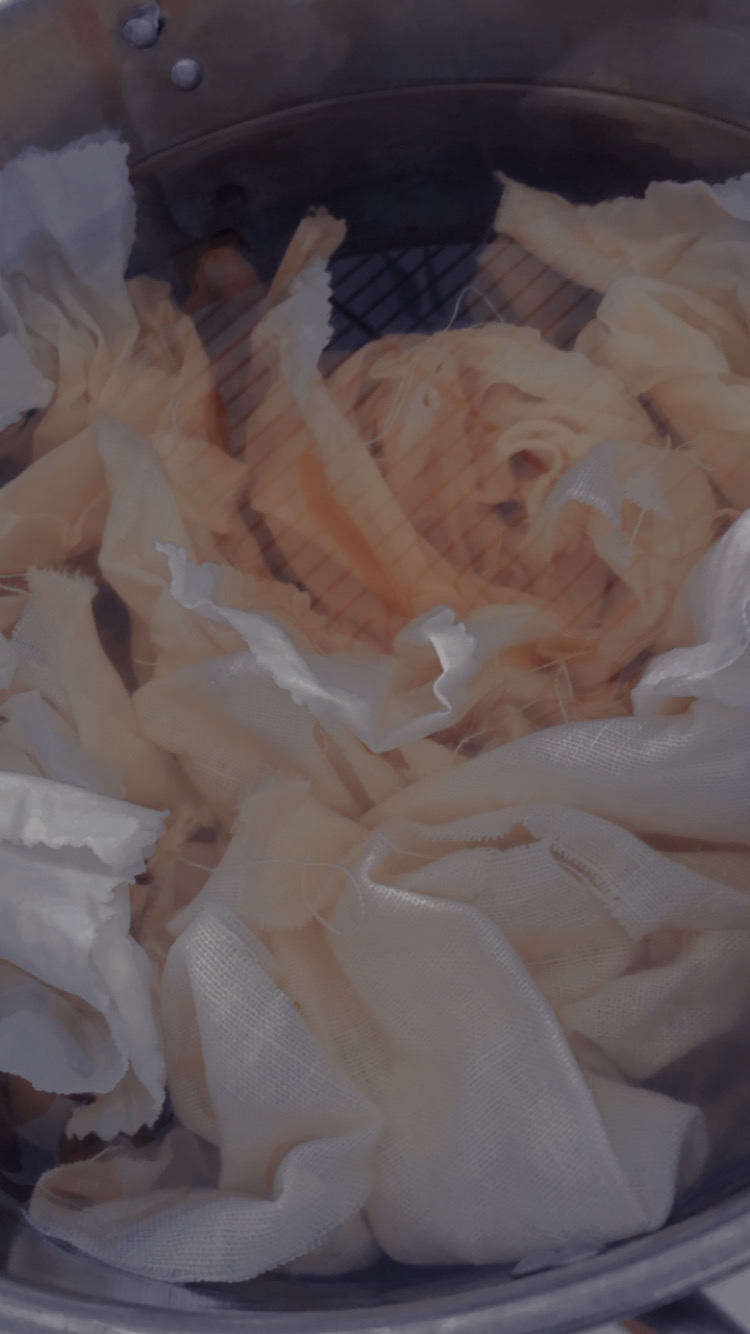
Steps :
* Step 1 - Place in gall nut batch lage at 70°, for at least 1 hour. (The weight of the galls is 20 to 30% of the fibres)
* Step 2 - Cool gently, leaving the fibres in the pan
* Step 3 - Remove the fibres from the bath by gently wringing them out
* Step 4 - Rinse the fibres with clean water
* Step 5 - Place in an alum bath at 70°, for a minimum of 1 hour.
* Step 6 - remove the fibres from the bath by gently wringing them out
* Step 7 - Rinse the fibres with clean water
You would have to repeat the two baths, Engallage and Alunage. We don't have time to do this second round, we're moving on to the colouring. In any case, it is not necessary to do an engallage bath to colour the fibre. But the combination of these two baths allows us to better prepare the fibre for colouring.
• PLANTS DYE¶
Colbert has created a list of dye plants according to their strength. Here we are going to see the plants that are the most used and the mosts solids :
FAWN RED

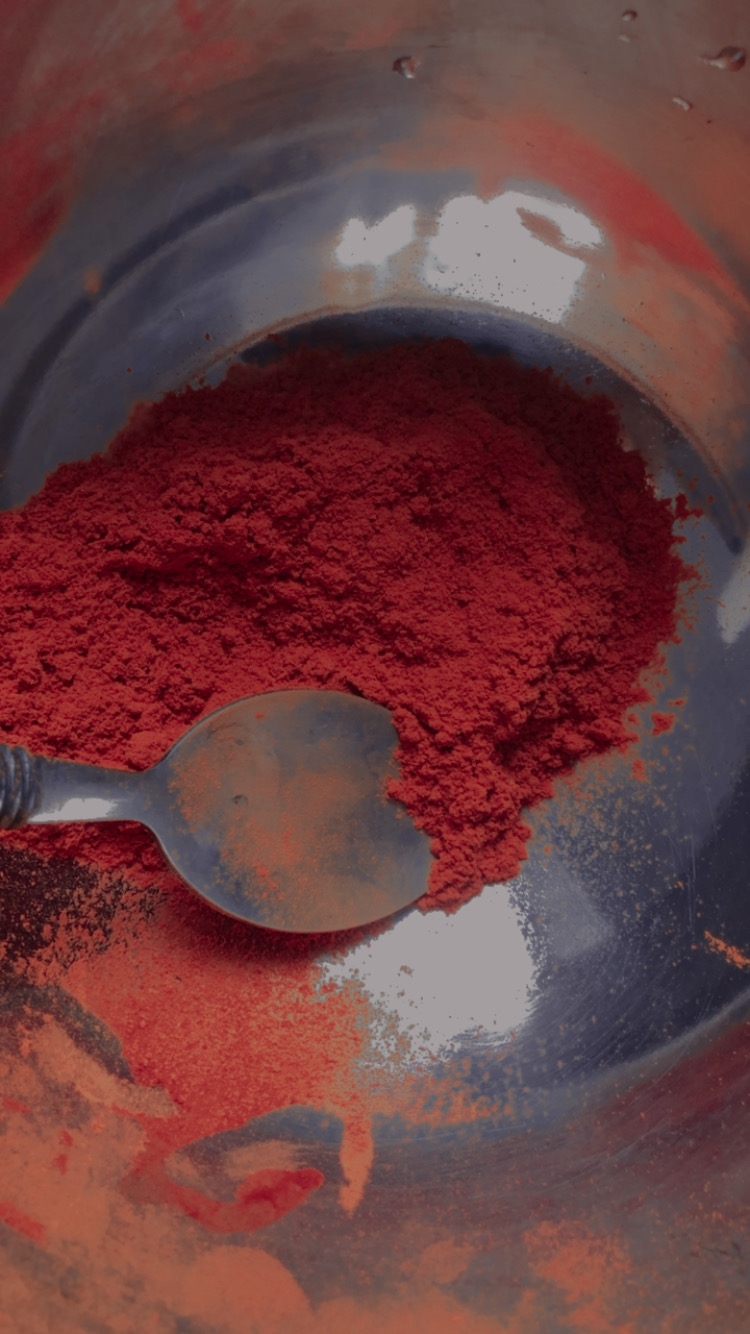

-MADDER -> Rubia tinctorum there are other types of wild madder for example which give other tones. Hence the importance of referring to the Latin name. In madder, we take the roots, the red woody which is around the root. This root is interesting after 2-3 years (Iranian producer, interesting climate). To obtain a bright red colour, you need 140% of the plant.
Madder contains the molecule Alizarin. To use madder as a dye, it must be heated gently to 80° for 1 hour. Each tincture can give a tone. It is extracted cold, macerate for about 3 days before dyeing. If you go beyond 80°, the fabric will turn brown and the red will be lost. It is possible to leave the fabric in the dye bath for a long time, but be careful with the temperature so as not to lose the red. Madder likes limestone, which is why it is better to use water from Lyon.
For colour saturation, it is not a question of soaking time but of the quantity of the plant.
For madder you can use 10% or 200%, for example some people use 175% madder to dye silk.
Fresh plant always weighs more than dry plants, Charlotte works with dry plants.
It is preferable to exploit all the dyeing molecules of the plant and therefore to reach the maximum temperature slowly.
Charlotte's advice: leave to soak for 2 to 3 hours
Wild madder: rubia perigrina
- Dyer's aspirula (aspirula tinctoria)
- Fragrant ASPIRULAS (Gallium odoratunm)
- MILK CUP (galium verum), little cultivated but wild, uses the root
- White MILK CUP (galium mollugo) little cultivated but wild, uses the root
BROWN ORANGE
- HENNE (with tannin) (Lawsonia inermis) use the leaves
- RHUBARBUS (root) (Rhum rhabarbarum)
- OSCIL (rumex acetosa) tends towards yellow
- PATIENCE (rumex patientia)
BROWN, SLIGHTLY RED

- WALNUT STAIN (leaves, husk and especially the walnut brou) special extraction cold maceration at least 1 year and it smells bad. Wrapped around the shell of the nut, it gathers when it is green in early autumn. Incredible colour, because there is a dye molecule in it. Then dye bath gently up to 80° to reach a bright brown.
- WALNUT (Juglans Regina) (tannin, naphthoquinomes, flavonoids)
YELLOW

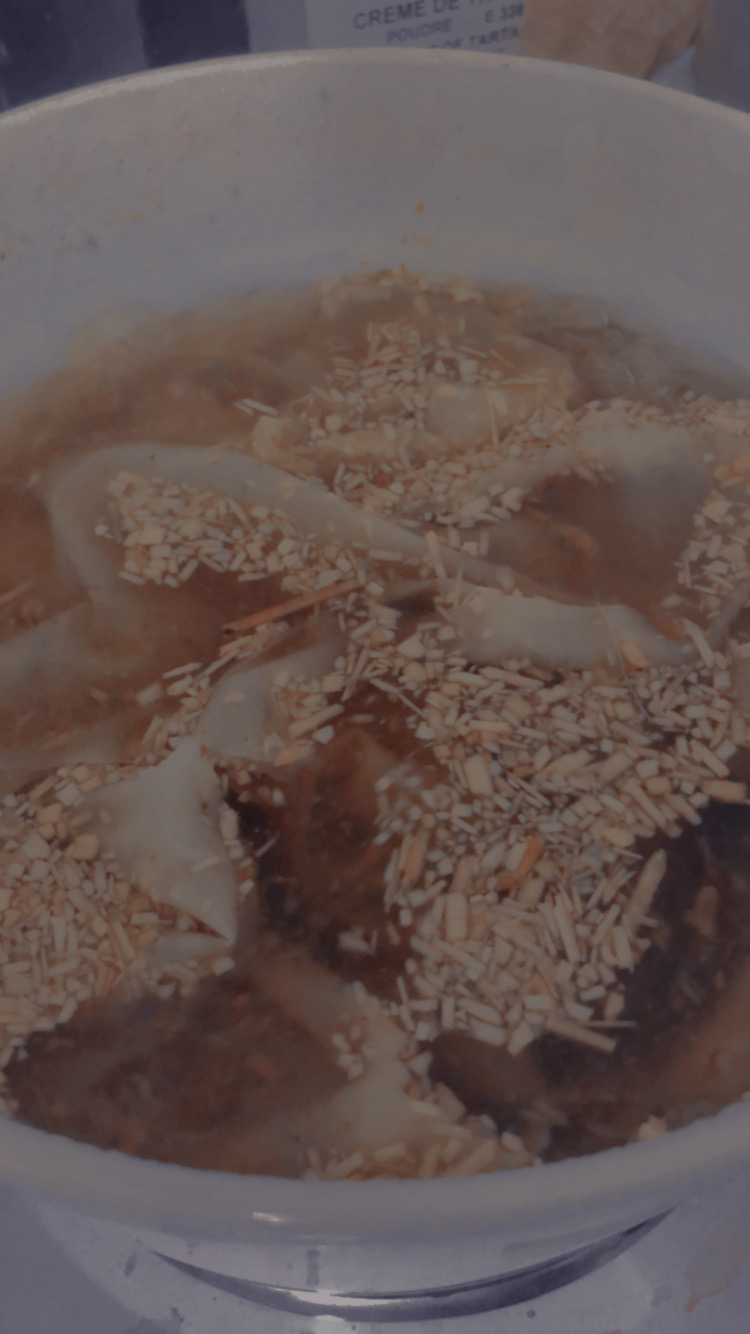
- GAUDE (reseda luteola different from reseda lutela) There is a lot of LUTEOLINE molecule (colouring molecule) very solid and the yellow. The leaves are taken, bi-annual plant and collected in the second year. Expensive plants compared to goldenrod or fleabane. Easy to grow. To get the brightest yellow, you need 200%
- Canada Goldenrod - invasive plant (solidago canadensis)
- Canada fleabane - (Comysa canadensis)
- Japanese SOPHORA (styphnolobi... Japocum) We take the buds from the tree.
- MILLEPERTUIS (flavoid and a lot of tannin) yellow orange and extracted in alcohol it gives red in alcohol, not very solid and if iron is added it gives green
- SULPHUROUS COSMOS (full of flavoids and flavonals, therefore solid)
-
ONION (not very solid)
-
GRENADE (skins)
- MILLEPERTUIS
- WALNUT STAIN
NAVY BLUE, PURPLE TO GREY


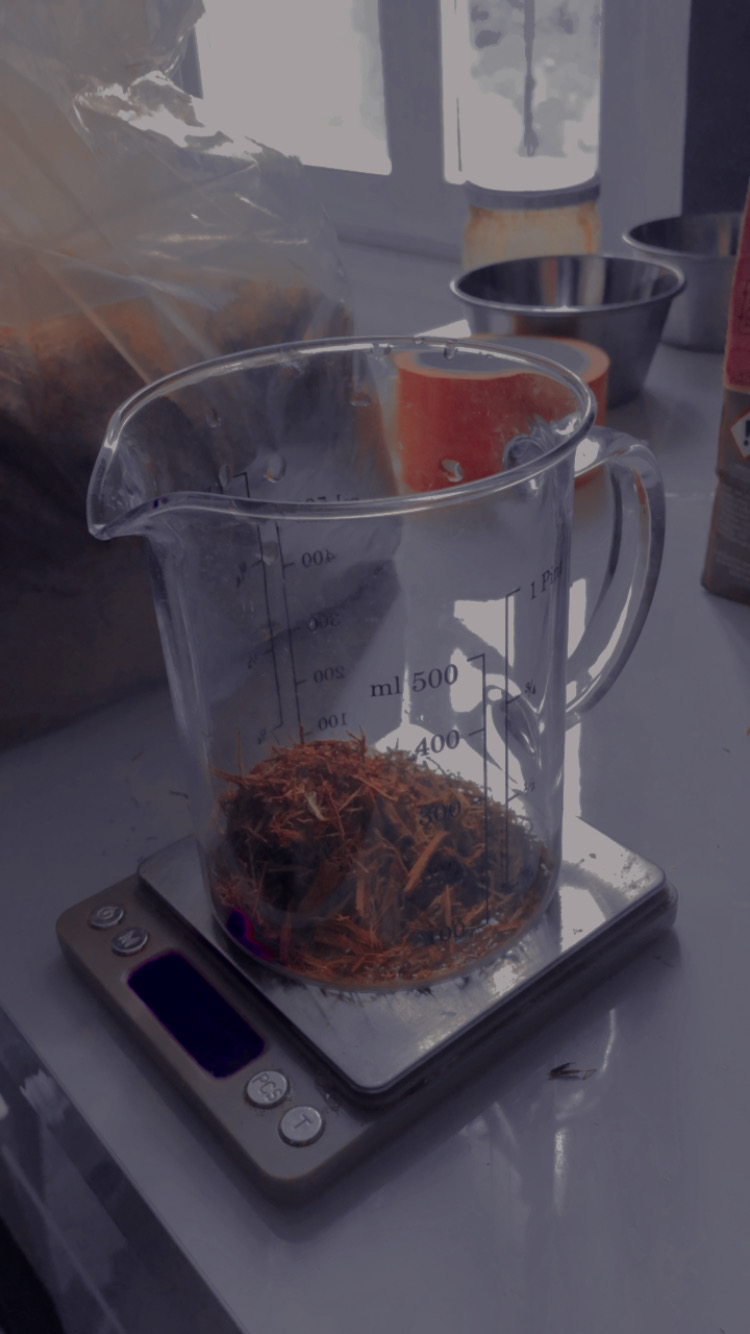
- "CAMPÊCHE" WOOD It comes from tropical countries. (Ahematxymum campechanum) there are a lot of flavonoids especially HOMOISOFLAVANONE (colouring molecule that gives purple / another group of Flavonoid. Extract in decoction then bath 70° max between 1h to 1h30. It can be heated more quickly than madder because there are fewer molecules
- GALLNUT
BLUE
- INDIGO
ORANGE/ROSE

- SANDALWOOD (flavoid and izoflavoid) same extraction as campeche wood.
- MADDER + GAUDE
- MADDER (30%)
GREY/BLACK

- WALNUT + IRON
- POMEGRENATE + IRON
- MADDER + PEACHWOOD
GREEN

- GAUDE + IRON
- ONION + IRON
- ST JOHN'S WORT + IRON
RECIPE FOR DYE BATH (Extraction of colouring molecules by decoction)
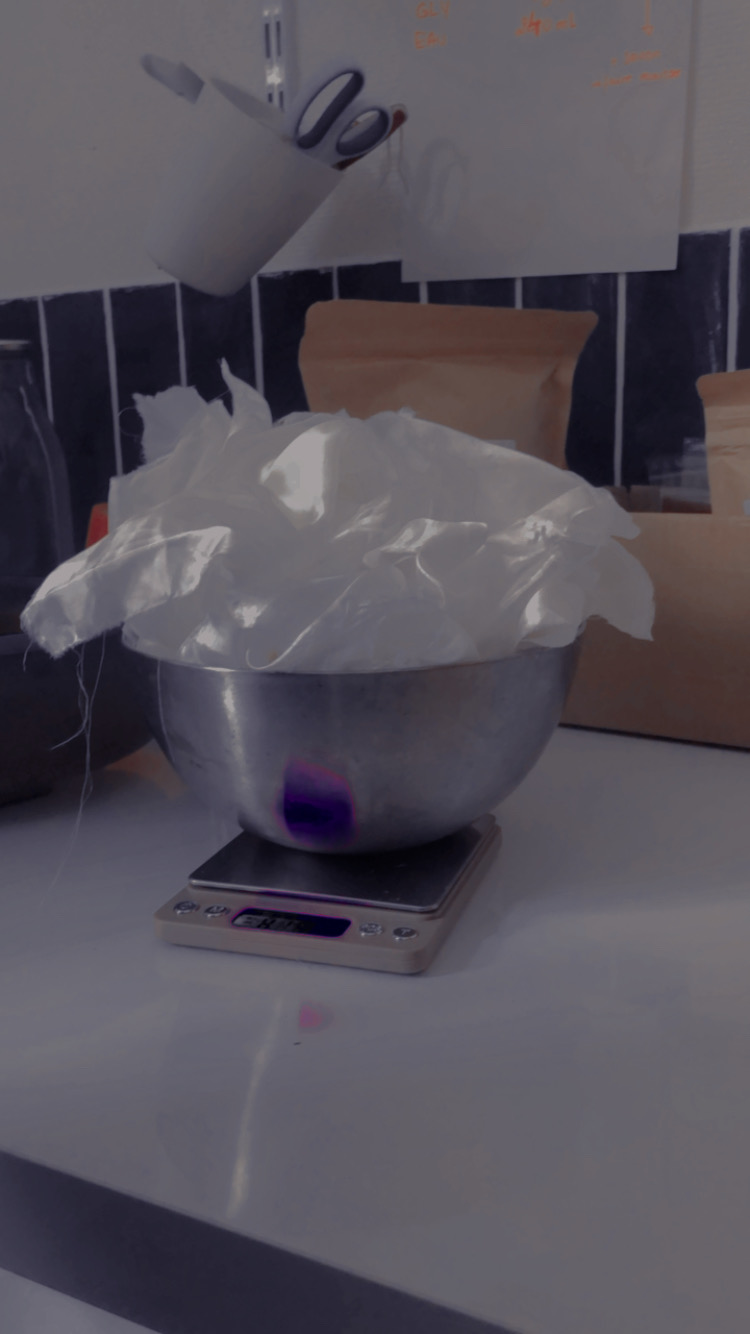
Ingredients & ustensils :
- Pots and pans
- Hot plate
- Spoons, pipettes and stirrers
- Gloves
- Thermometer
- Kitchen scale
- Drying line or a drying rack
- Plants powder depending on the colour you want
- Fabric
- Water
- Notebook and pen

Yesterday we prepared the fabrics. The fabrics (linen, cotton, silk and wool) were left overnight in the hot alum mordant. Ideally, the fabrics should be dried well.
Steps:
* Step 1 - Weigh 30% of plants by fibre weight. (you can try 60%, 100%, 120% to play with the intensity of the colour).
* Step 2 - Add water to the plant powders (You need 3L of water for 100g of fibers). Let it bath for 1 to 3 hours.
* Step 3 - Mix to remove the colouring molecules.
- Madder: put the fibre directly into the water+plant mixture and then gradually heat the mixture. (COLD EXTRACTION)
- For other plants: make a water+plant decoction to make a HOT EXTRACTION.
* Step 4 - Soak the fabric.
* Step 5 - Raise the temperature slowly to reveal all the colouring molecules (to 80°).
* Step 6 - Stir regularly for a homogeneous colouring. And don't if you are looking for non-homogeneous. The more you let it soak, the more intense the colour will be.
* Step 7 - Remove the cloth from the pan and let it dry. The longer you let it dry the better the colour will hold.
* Step 8 - Rinse it to clear water to remove excess colour.
• Inks¶

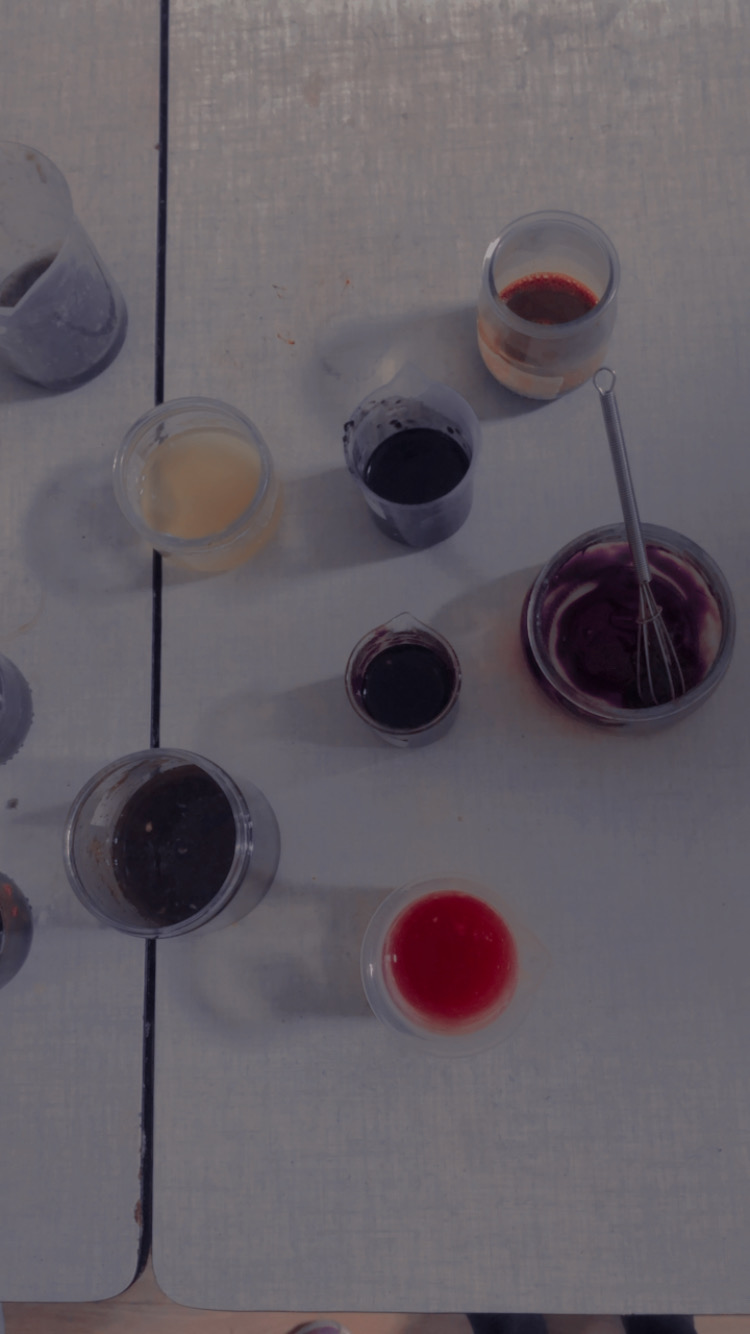
A printing technique from India with printing paste :
ALUM ACETATE INK PASTE
Ingredients & ustensils :
- Dosing spout
- Spoons, pipettes and stirrers
- 1 container
- 1l vinegar
- 60g iron sulphate
- 50g soda crystals
- Guar gum (thickener)
Steps:
* Step 1 - 1 l vinegar for 100g Alum (or 60g alum sulfate which is easier to dissolve) + 50g soda crystals (that help the alum to dissolve)
* Step 2 - Agg Guar gum to make the liquid into a paste (about 1% to add progressively).
* Step 3 - Apply the mixture on the fabric where you want to, which will harden.
* Step 4 - (Do a wheat bran bath for the fabric).
* Step 5 - Removes the mordant surplus.
* Step 6 - Dip the fabric in a dye bath and the colour will only hold where the mordant has been applied.
* Step 7 - Adding color directly in the printing paste will make an ink.
IRON ACETATE INK PASTE
Ingredients & ustensils :
- Dosing spout
- Spoons, pipettes and stirrers
- 1 container
- 1l vinegar
- 60g Iron sulphate
- 50g soda crystals
- 1% Guar gum (thickener)
Steps:
* Step 1 - 1 l vinegar for 60g iron sulfate + 50g soda crystals (that help the alum to dissolve)
* Step 2 - Agg Guar gum to make the liquid into a paste (about 1% to add progressively)
* Step 3 - Apply the mixture on the fabric, which will harden.
* Step 4 - (Do a wheat bran bath for the fabric).
* Step 5 - Removes the mordant surplus.
* Step 6 - Dip the fabric in a dye bath and the colour will only hold where the mordant has been applied.
* Step 7 - Adding color directly in the printing paste will make an ink.

• (RECYCLING THE DYE INTO) PIGMENTS¶
Ingredients & ustensils (for 200ml filtered coloured juice) :
- 20g alum
- 5g soda crystals
- 3 beakers with high rims (the reaction may foam afterwards)
- 3 spoons
- 1 funnel
- 1 mortar and pestle
- 1 maryse
- 1 balance
- 1 piece of cotton to filter the pigment
- 1 dehydrator
Steps:
* Step 1 - Weigh the solid ingredients: alum and soda crystals.
* Step 2 - Dilute them separately with very hot water (Alum needs more time to dissolve).
* Step 3 - Pour 200ml of filtered coloured juice into the high rim beaker.
* Step 4 - Add the diluted alum to the beaker
* Step 5 - Gently add the soda crystals and mix
* Step 6 - Leave to stand for several hours, until 2 phases appear (a liquid and a solid phase).
* Step 7 - Place the cotton ball in the funnel to recover the solid phase.
* Step 8 - Leave to filter for several hours/days.
* Step 9 - Collect the precipitate (solid phase) with a clean spoon.
* Step 10 - Put in a dehydrator
* Step 11 - Grind it with a mortar and pestle.
• ECO-PRINTING¶
Ingredients & ustensils :
- Hot plate
- Steamer
- Flowers, petals, mushrooms, wood, leaves... with strong colouring agents
- Prepared fabric
- Wooden rods -Some lace
- Notebook and pen

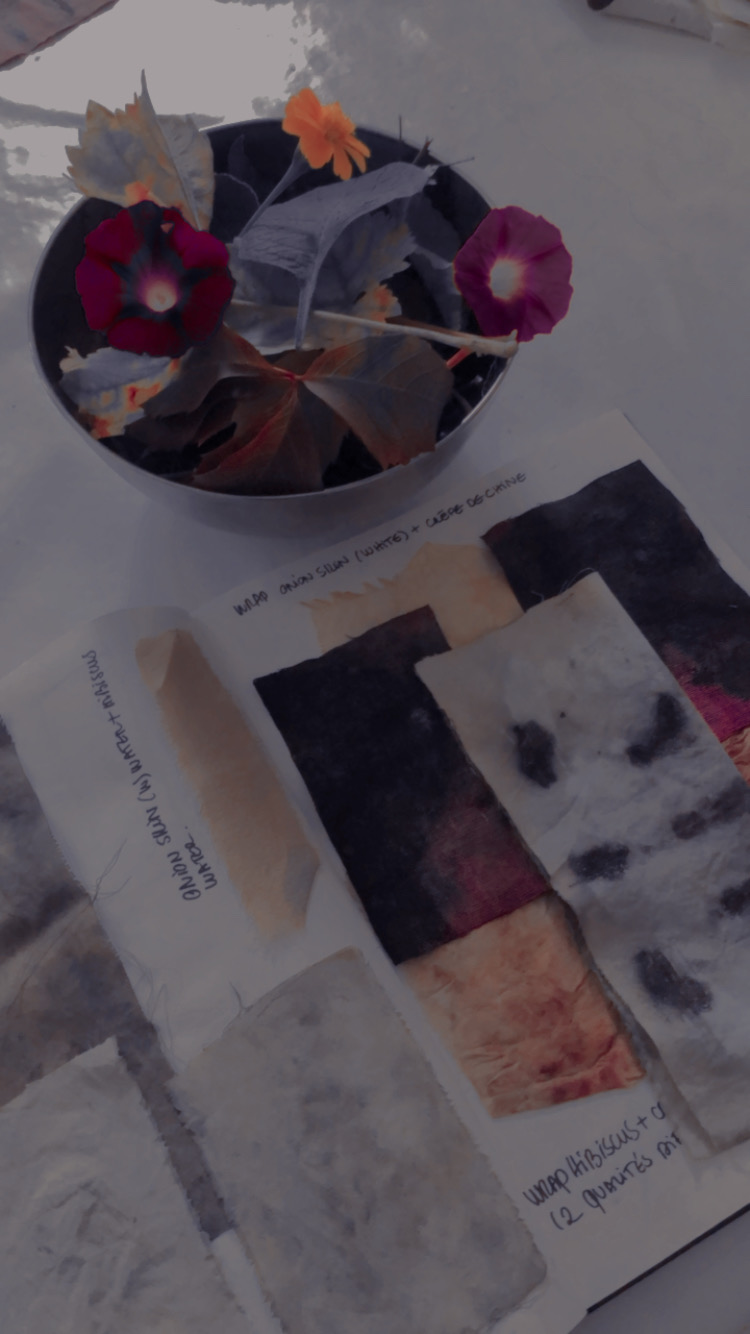
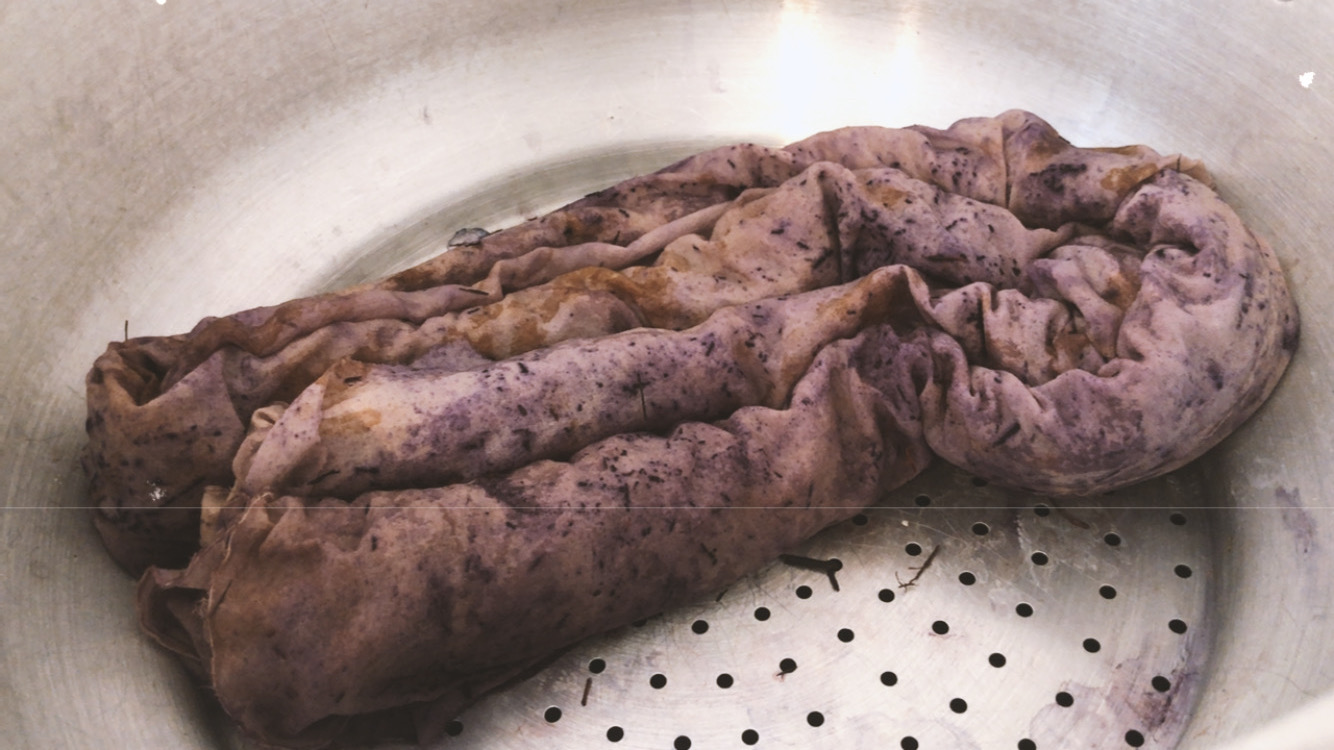



Steps:
* Step 1 - Selected flowers, leaves and other natural material you want to use.
* Step 2 - Make a composition out of it on a mordanted piece of cloth.
* Step 3 - When the composition feels interesting to you, place another cloth onto it.
* Step 4 - Use a wooden rod to roll up the fabric on itself and fix it with a lace or anything that can hold it tight.
* Step 5 - Put it in a steamer for 1 to 3 hours.
* Step 6 - Remove the roll from the steamer and unroll the fabric.
* Step 7 - Let it dry and enjoy the results.
• RESEARCHES/EXPERIMENTATIONS¶











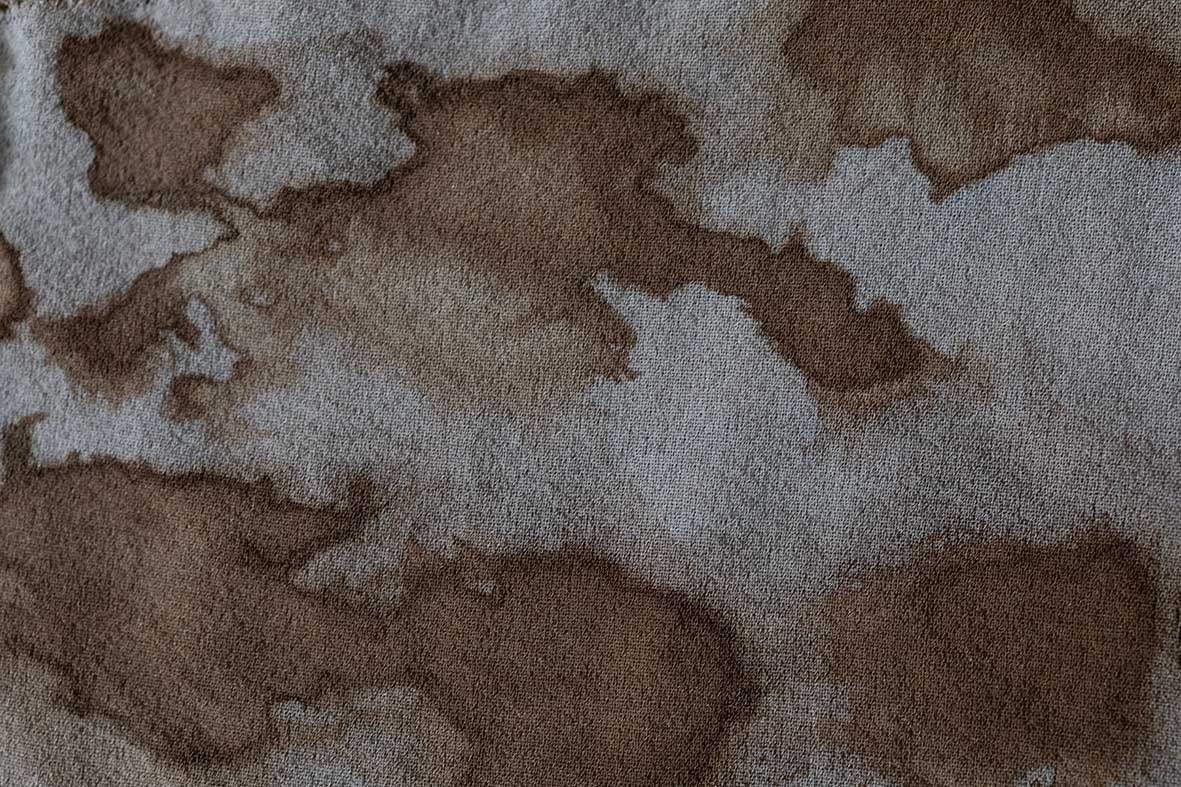



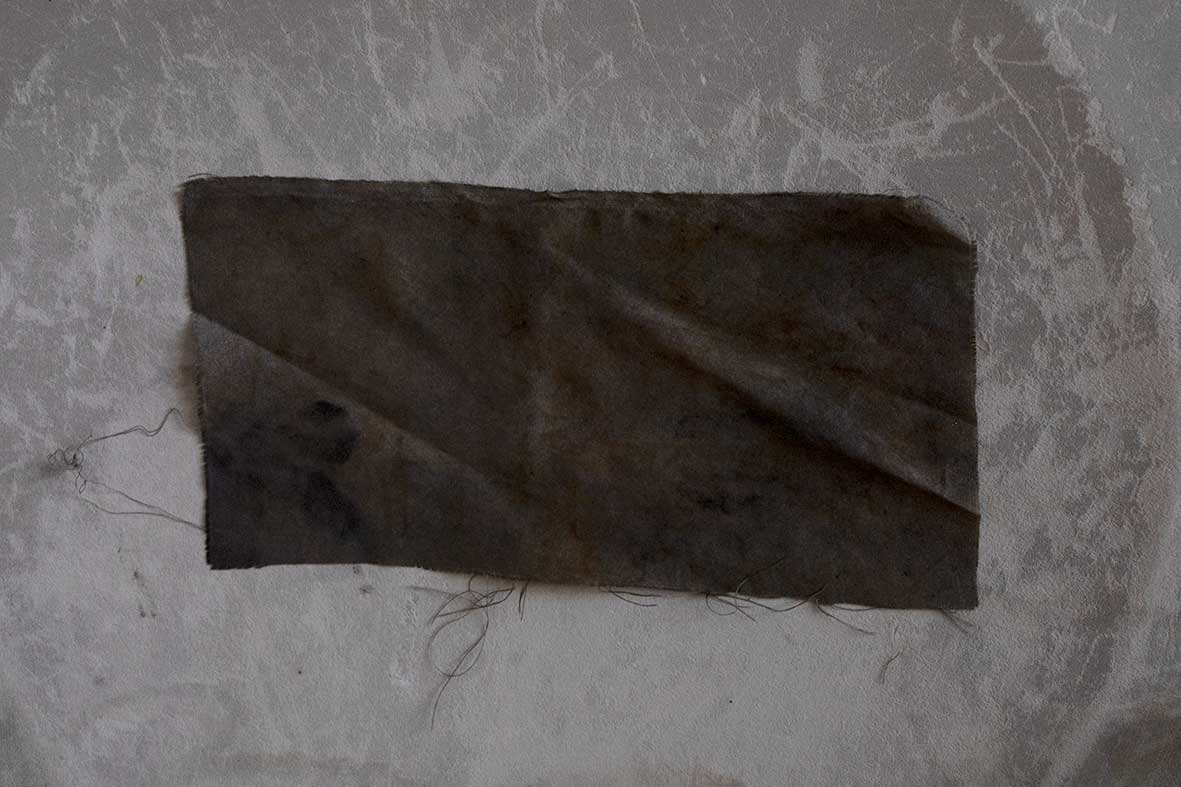

EXPERIMENTATIONS ON SILK "CREPE DE CHINE"

I wanted to use one of my crepe de chine silk fabric to make a silk shawl. A golden scarf, as I was very inspired by the samples of onion + iron, which has this vivid yellow-gold that I find very captivating. I've also appreciated the walnut stain brown/beige color, particularly the tye&dye effect I could do with it. So I basically used these two amazing colors for the scarf creation.
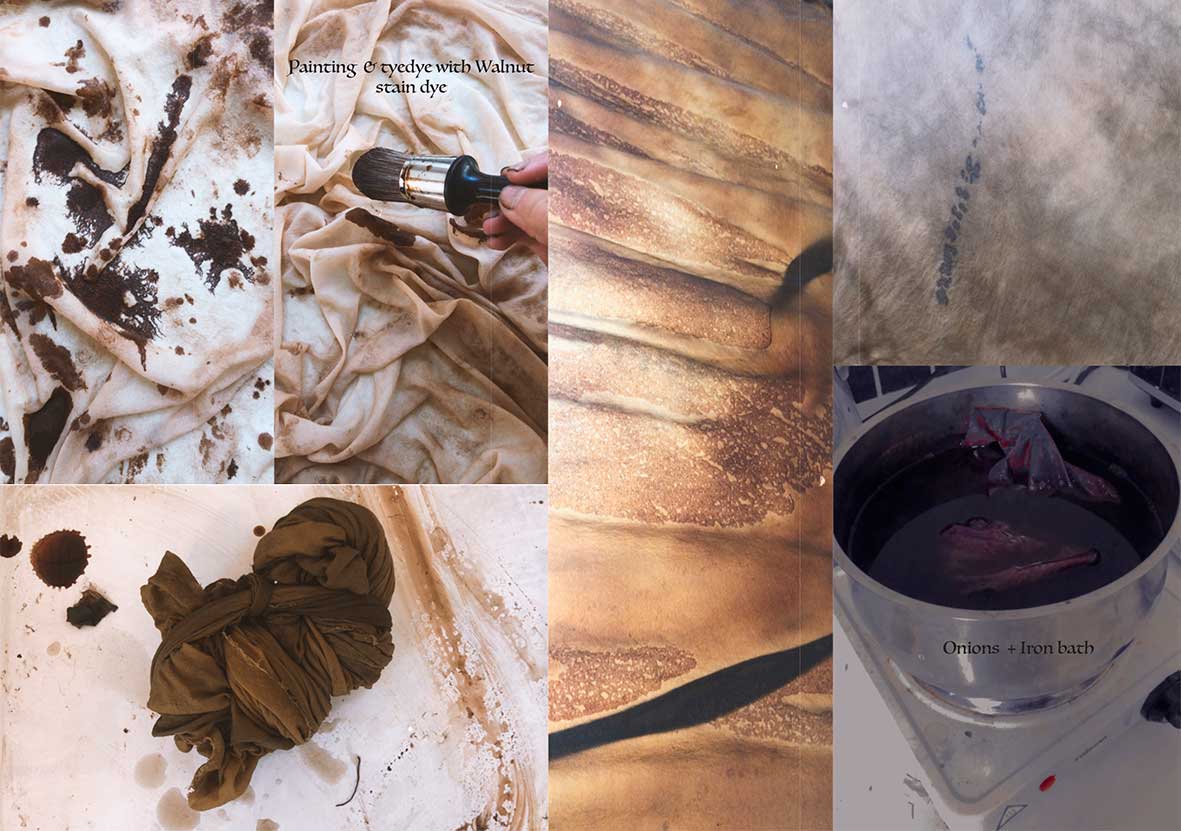
As I said earlier, I think that I prefere things that seem not perfect, even with a vintage/textured aspects instead of uniform and too smooth aesthetic. I am captivated by the mistakes, the surprises, for me it has more soul. I tried to find new techniques to create textures : painting directly on the fabric with the dye and a paintbrush; making different knots to have surprising effects and a kind of wash-out finition. I've also used some pipettes to create spots.
The Walnut stain was not very strong, as I used powder instead of maceration. Therefore, the color did not soak in properly but created some very slight stains/textures. The Onion+iron soup blend worked pretty well and reacted as I wanted to. A beautiful golden yellowish kaki which makes me think of a parchement. For the recipe below, then I will not use the walnut stain but only the Onion skins;
Ingredients & ustensils (for 75g of animal fibre) :
- Pots and pans
- Hot plate
- Spoons, pipettes and stirrers
- Gloves
- Thermometer
- Kitchen scale
- Drying line or a drying rack
- 45g (yellow) Onion skins x 1,5
- Iron soup
- Fabric
- Water
- Notebook and pen
Steps:
* Step 1 - Weigh the fabric (here 75g of silk) to calculate the weight of onion required by 60%. For 75g of silk, we need 45g of onion skins.
* Step 2 - put the onions in the pan with about 1.5L of water (You need 3L of water for 100g of fibers).
* Step 3 - Add 3 tbsp of iron soup previously prepared.
* Step 4 - Mix to remove the colouring molecules.
* Step 5 - Raise the temperature slowly to reveal all the colouring molecules (to 80°).
* Step 6 - Soak the fabric. Let the onion skins inside so that it creates more surprising texture and a non-homogenous color.
* Step 7 - leave it for about 30minutes.
* Step 8 - let it dry on a wire or a drying rack.
* Step 9 - Repeat the process of heating and bathing when the fabric is completely dry, for a longer time, like 1hour. You can at this point try to tie it, or dip only a part. Repeat till you start to see some colour graduation and interesting effects.
* Step 10 - When you have played with the texture and the color enough and you start to see that there is no more coloring molecules within the bath left, it is time to make a second bath.
* Step 11 - You can put about 22,5g of onion skin in a new pan with 2 tbsp of iron soup and start heating.
* Step 12 - When it is hot enough, then stop it and put the silk into it.
* Step 13 - leave it to soak overnight.
* Step 14 - Dry it.
* Step 15 - Rinse it with clear water and let it dry again.